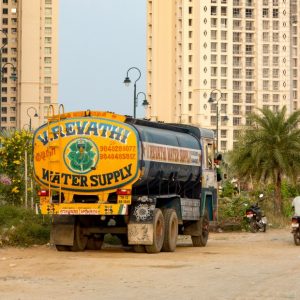The Stream, April 26: Brazil Hydropower Threatens Indigenous Communities, Groups Say
The Global Rundown
Indigenous communities warn that hydropower development in the Tapajós basin in Brazil puts their livelihoods and culture at risk. Saltwater intrusion and water shortages in Bangladesh are forcing farmers to move to the city, and leaving women at home. China’s water quality continues to improve overall, but some areas are getting worse, according to the environment ministry. Environmental groups are suing the U.S. government to force it to address algal blooms in Lake Erie. Above average rainfall is responsible for high water levels on Lake Ontario, not a new management plan, says the binational agency that oversees the lake.
“Despite not being widowed or divorced, the women in these areas are managing a female-headed household while the men are away. They are struggling to take care of their children and household chores. There is a feeling of insecurity when the men are not around.” –Dilruba Haider, program coordinator for gender and climate change at the UN Women office in Bangladesh, referring to Bangladeshi women whose husbands have migrated to the cities to look for work. The migration is driven in part by water shortages and saltwater intrusion that make it more difficult for families to grow rice and find work as farmers. (Aljazeera)
By The Numbers
40 hydropower projects Number planned within the Tapajós basin in Brazil. The region’s indigenous Munduruku people warn the projects will irreparably harm their territory and culture, and are asking the international community to hold the Brazilian government accountable on its indigenous rights commitments. Guardian
In context: The popularity of big hydropower projects is diminishing around the world.
53 centimeters above average Current water level in Lake Ontario, where above average rainfall this month threatened to cause flooding along the lake and the St. Lawrence River. The International Joint Commission, which oversees waterways shared by Canada and the United States, said the high water was not due to recent changes in lake level management meant to restore wetlands. The Daily News ; IJC
In context: Plan 2014 places ecosystems at the heart of decisions and tests resolve to restore wetlands.
Science, Studies, And Reports
Water quality across China is improving overall, but the gains are “uneven” according to a report from the country’s Ministry of Environmental Protection. Some waterways have declined in quality, including the Liao River and the Songhua River. Reuters
On The Radar
Environmental groups in Michigan and Ohio filed a lawsuit Tuesday to force the U.S. Environmental Protection Agency to declare Lake Erie an “impaired” water source under the federal Clean Water Act. The designation would trigger state and federal plans to resolve toxic algal blooms that at times have poisoned drinking water. WKYC
In context: Learn about the efforts already underway to curb Lake Erie’s algal blooms.
A news correspondent for Circle of Blue based out of Hawaii. She writes The Stream, Circle of Blue’s daily digest of international water news trends. Her interests include food security, ecology and the Great Lakes.
Contact Codi Kozacek





